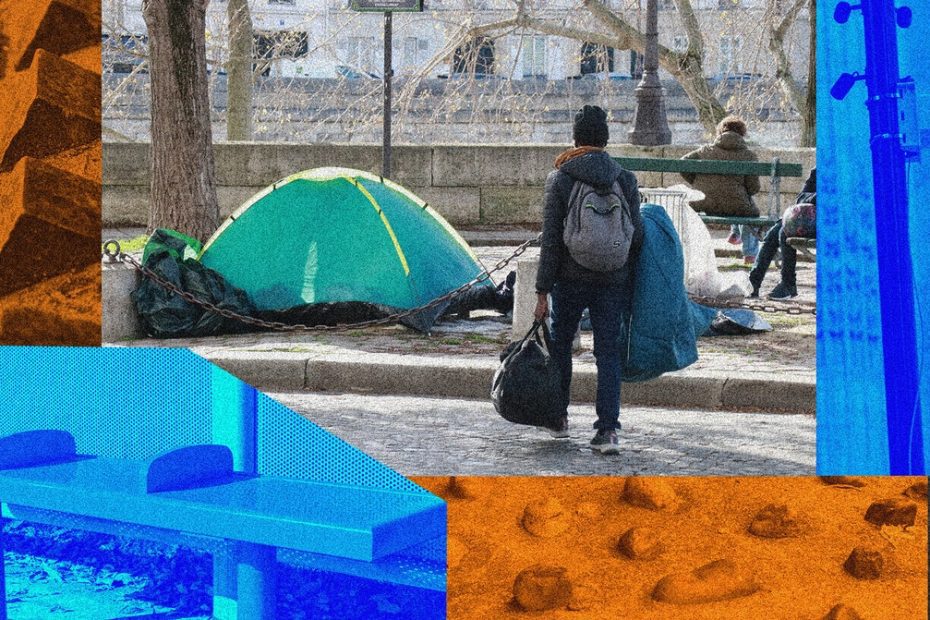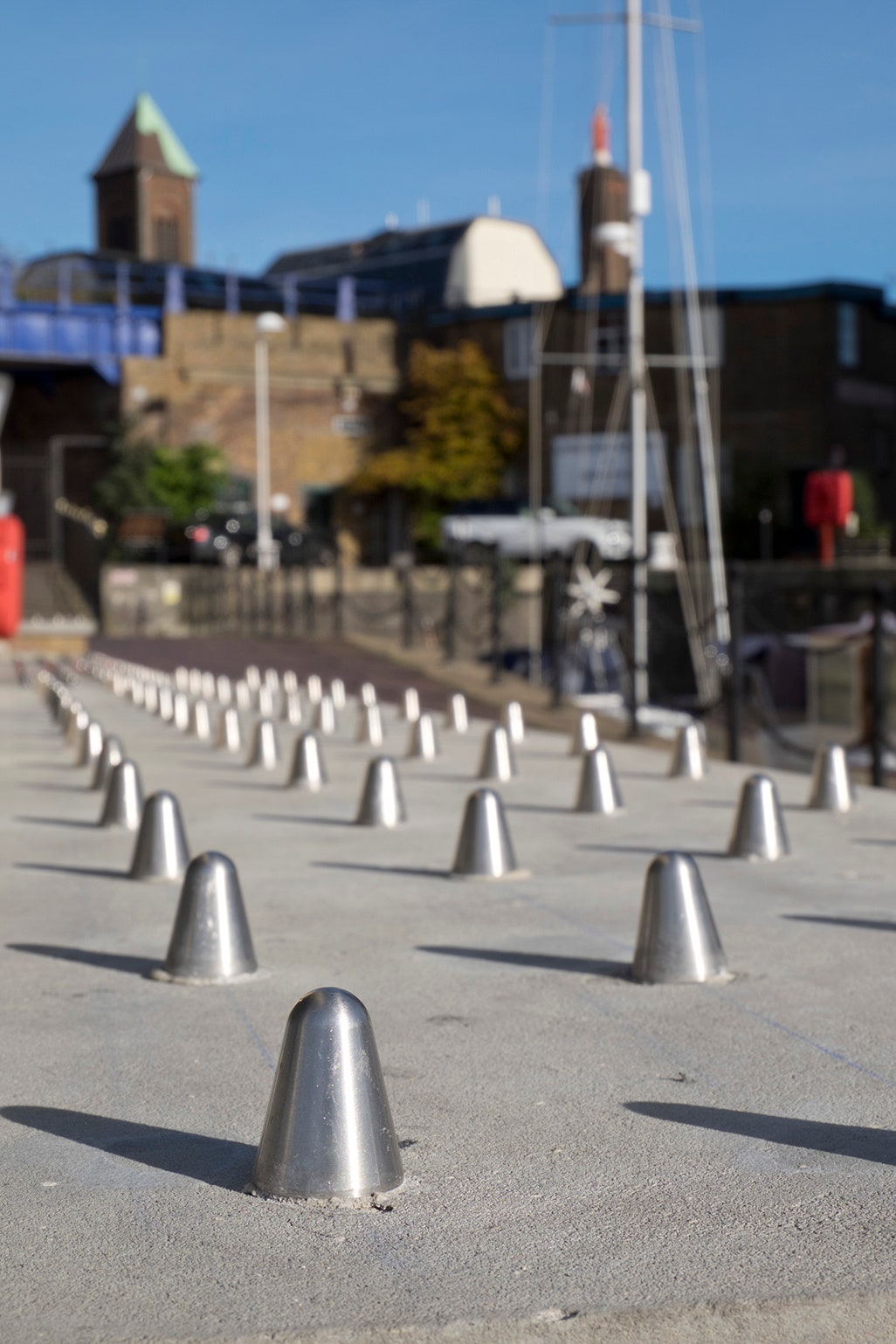A strange sight appeared on a graffiti-covered sidewalk in Paris just days before the opening ceremony of the Olympic Games in July: some 40 giant Lego-like cement blocks laid out in neat rows beneath the Pont de Stains, a bridge in the northern suburb of Aubervilliers that connects two Olympic venues, the Stade de France and the Parc des Nations.
The site used to be a homeless camp, where around 100 people, many of them migrants, lived in tents. Then on July 17, the police arrived and ordered everyone to leave, as part of a clean-up operation in which the authorities put homeless people, members of the Roma community, migrants and sex workers on buses to other cities, such as Bordeaux or Toulouse.
After authorities cleared the area, activists say immovable concrete blocks were placed in place of the tents, effectively eliminating any idea that the former residents would ever be able to return.
Campaigners say the stones are an example of hostile architecture, a term used to describe some of the most visible changes that cities and businesses are making to discourage homeless people from loitering or sleeping on their properties. “This is not new, but it has been intensified in a very specific way during the Olympics,” said Antoine de Clerck, part of Le Revers de la Médaille, an activist group raising awareness of how marginalized people are treated at the Olympics.
“We are not advocating camps, squats and slums,” de Clerck adds. “But to eradicate them, you have to find alternative long-term solutions.”
Despite other examples of hostile architecture in Paris, including picnic tables where people used to sleep, it’s the giant Lego-style blocks that have proven the most controversial. “I’ve never seen anything like it,” says Jules Boykoff, a professor and former professional soccer player who studies the impact of the Olympics on marginalized communities. “Usually hostile architecture is more subtle,” he says, “like a curved bus bench that makes it less comfortable to sleep.”
Anti-homeless spikes and rough surfaces installed in luxury housing development to deter homeless people from sleeping rough in the area around the Limehouse Basin marina in London, UKPhoto: Julio Etchart/ullstein bild via Getty Images


